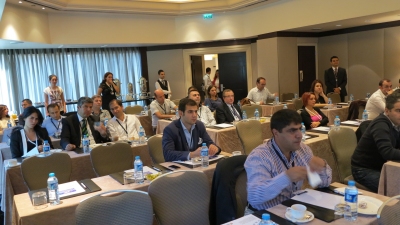Employee Experience (EX) is an approach that recommends that the organization put’s the employee in the center through simple and user-friendly processes to aim what the employee sees, hears, feels and thinks towards improving the employee’s satisfaction, involvement, sense of well-being and contribution. We will present here 8 steps to implement an effective EX strategy.
The EX is an organizing element that uses both the organizational culture infrastructure and familiar tools such as salary, bonuses, welfare and training activities which are channeled to improve the overall experience of employees and their Employee Engagement in the workplace. We will present here 8 steps to implement an effective EX strategy.
The world has already internalized the critical of the EX. In a global survey of Deloitte in 2017, 80% of managers rated the issue in their company as “important” or “very important”. EX processes have been made or performed on Ford Motor, Airbnb, Cisco, IBM, GE, Nike, Adobe, Telstra and Commonwealth Bank of Australia. Because in Israel as well, CEOs and HR managers are constantly grappling with the challenges of recruiting talented employees and connecting them to the organization for the long term, We will present here 8 steps to implement an effective EX strategy.
- Make sure that the EX approach is supported by the most senior management. If the organization is large enough, appoint a senior manager or team to be responsible for the EX. For example, Ford Motor, which employed about 200,000 employees in 2017, operated a massive EX strategy that included the appointment of an EX manager.
- Use Design Thinking to learn what employees in the organization actually do every day and simplify the work in a way that improves employee performance and engagement. Apple, Google and Facebook, for example, use the overall design of an experience in sports, collaboration, health, nutrition and nature to optimize the employee experience.
- Ensure that employee experience management is directed to the relevant workforce, including candidates for recruitment. For example an optimal experience for candidates, can attract talented workers to the organization.
- Use the Internet and conversations with colleagues to recognize and assimilate the best practices relevant to employee experience management.
- Implement technological tools to enhance the employee experience, from tools to improve productivity and collaboration, through software tools to involvement and feedback, to technological tools that can sense the employee and to engage in dialogue that enhances his experience in a way that contributes directly to the organization. For example, IBM, created by the Employee Experience Index, saved over $ 130 million by using technology tools to predict what employees might leave and inform managers in advance.
- If the organization’s employees are scattered around the world, understand how cultural differences affect the employee experience in different countries and make cultural adjustments to the corporate EX policy.
- Develop an up-to-date understanding of the issues workers face through regular interviews and conversations with existing employees, candidates and employees who leave the workplace. Ford Motor, for example, recently conducted a “listening campaign” that gathered feedback from employees and assimilated insights into work patterns.
- Consider using quantitative parameters from the marketing world, such as a net promoter score, to measure the practical impact of the employee’s experience on his relationship to the organizations.
Similar to the revolution that led to customer experience and marketing experience, HR managers around the world and in Israel will activate an effective management of the employee experience that will boost their ability to attract and retain talented employees.
 +44 208 900 9991
+44 208 900 9991 +01 480-374-7770
+01 480-374-7770




